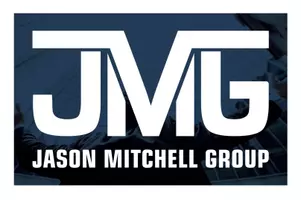Opinion: San Diego MTS more cost-effective than California transit peers
Although San Diego’s Metropolitan Transit System requires large taxpayer subsidies each year, it is notably more efficient than other major California transit systems. As such, it is a best practice operator and has some things to teach its peers, criticism from local watchdogs notwithstanding.
In our California Policy Center analysis of fiscal year 2023 annual reports to the National Transit Database (the latest year available), we found that MTS’ operating expense per passenger mile of $0.91 compared favorably to LA Metro ($1.84), San Francisco BART ($1.15), San Francisco Muni ($3.66), Sacramento RTD ($3.62), Santa Clara VTA ($3.85), Alameda-Contra Costa Transit ($4.35) and the Orange County Transportation Authority ($2.35).
More recent data show MTS making an impressive post-COVID ridership recovery, with fiscal year 2025 boardings reaching 95% of pre-pandemic levels. Although MTS’ operating expenses are growing faster than the rate of inflation, the agency is balancing its budget by diverting non-critical capital funds to operations.
This is a welcome contrast to Bay Area transit agencies which are seeking a half-cent sales tax hike in 2026 to address rising costs and to backfill now-exhausted federal pandemic relief funds. As the Union-Tribune reported last week, MTS will not go to the ballot until at least 2028.
Relative to some of the other larger systems, especially San Francisco Muni, MTS benefits from having trolley and bus lines that cover long distances. The UC San Diego Blue Line Trolley, which accounts for about 30% of system ridership, covers over 26 miles from the Mexican border to the UCSD campus and the University Town Center mall. MTS also has several Bus Rapid Transit lines, including the 39-mile Rapid 235 connecting Escondido with downtown San Diego.
While MTS is better than its peers on a cost per passenger mile basis, it nonetheless suffers from similar challenges including a low farebox recovery ratio and spiraling costs. MTS has not raised its fares since 2009, eroding its farebox recovery ratio.
Also, as we discuss in our study, transit agencies are suffering from a phenomenon known as Baumol’s cost disease which also affects health care and education. These labor-intensive services face cost pressure because workers’ overall compensation rises faster than the rate of inflation, while service delivery does not become more efficient. Labor input per passenger mile does not fall over the long term.
But this can change if MTS and other providers implement driverless technologies since vehicle operators are a big component of the transit labor force. Metro systems around the world are building driverless train lines or converting older lines to autonomous operation. Notable examples include Vancouver, Paris and Honolulu.
Unlike MTS, rail lines using driverless trains thus far have been heavy rail systems with no grade crossings. That is changing this year as a light rail system in Basel, Switzerland, begins to implement autonomous technology.
Progress is also being made automating bus service. Japan is running driverless bus service around the country, and Jacksonville, Fla., recently launched an autonomous downtown circulator bus line. That service currently uses a human safety monitor, but the Jacksonville Transit Authority’s plan is to go fully autonomous next year.
Like driverless buses, robo-taxis must face a broader range of driving situations than a train running along a fixed guideway. Compared to San Francisco and Los Angeles residents, San Diegans have had less exposure to driverless taxis. Waymo has been providing robo-taxi service in the other two cities for over a year and is now providing over 1 million rides nationally per month. Waymo is testing in San Diego and once it launches, residents will see that autonomous bus service is not science fiction.
While MTS is running a tight ship relative to California transit agency peers, it will likely require tax revenue until it embraces the newest technology. Hopefully, leaders will make the transition to autonomous service before burdening consumers with even higher sales tax rates.
Joffe is a fellow at California Policy Center. Joshi is an intern at California Policy Center.
Categories
Recent Posts










GET MORE INFORMATION


